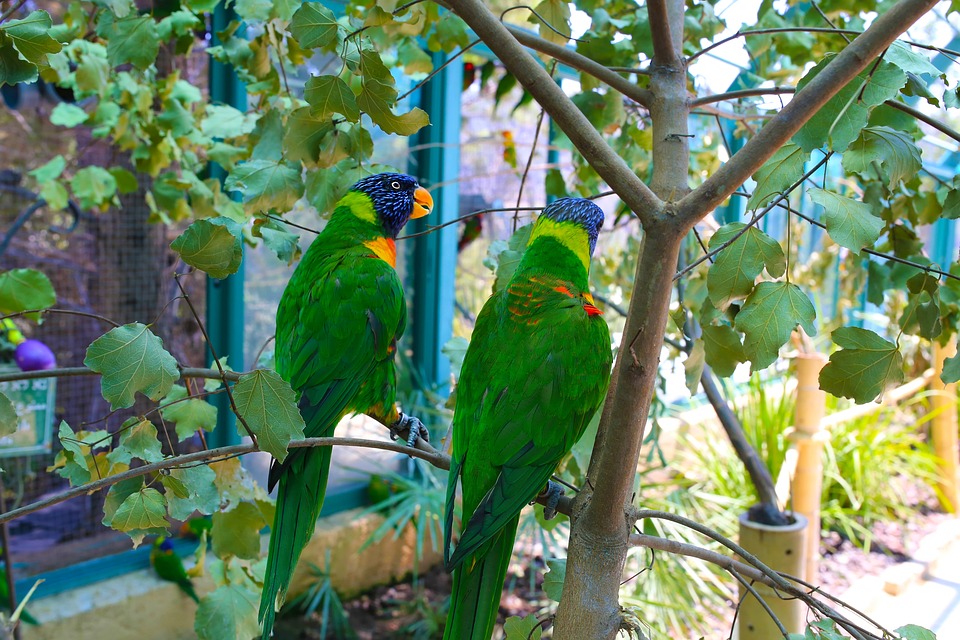Parrots are highly intelligent and social creatures that require mental stimulation to lead healthy and fulfilling lives. While interaction with their human companions is crucial, incorporating music and environmental sounds can significantly enhance a parrot’s mental well-being. In this article, we will explore the benefits of providing mental stimulation through music and environmental sounds for parrots and provide practical tips to incorporate these elements into their daily routines.
Music has a profound impact on parrots, stimulating their brains and enhancing their cognitive abilities. One reason for this is rhythmic stimulation. Parrots have a natural inclination towards rhythm and can synchronize their movements with music. Rhythmic stimulation through music can promote physical exercise and improve coordination in parrots. It enhances their motor skills and encourages active engagement.
In addition to physical benefits, music also provides emotional enrichment for parrots. Just like humans, music has the ability to evoke emotions in parrots. Calming melodies can help reduce anxiety and stress levels in parrots. Uplifting tunes can provide a sense of joy and happiness, creating a positive environment for them.
Furthermore, parrots are known for their exceptional ability to mimic sounds, including music. Listening to music can stimulate their vocalization skills and encourage them to imitate melodies and rhythms. Engaging in musical activities can strengthen the bond between parrots and their human companions.
Apart from music, incorporating environmental sounds into a parrot’s daily life can offer additional mental stimulation. Playing recordings of natural sounds like rainforest ambience, ocean waves, or birds chirping can create a soothing and enriching environment for parrots. These sounds mimic the parrot’s natural habitat, fostering a sense of security and comfort.
Exposing parrots to everyday household sounds like doorbells, phone ring tones, or kitchen appliances can help them adapt to their human-oriented surroundings. Gradually introducing these sounds can prevent anxiety or fear responses during routine activities.
Providing a moderate level of background noise, such as soft music or a television on low volume, can help parrots feel secure and prevent them from getting overly startled by sudden noises.
Here are some frequently asked questions about providing mental stimulation through music and environmental sounds for parrots:
Q1. Can any type of music be played for parrots?
While parrots can enjoy a wide range of music genres, it is best to avoid loud or aggressive music that may cause stress or discomfort. Opt for calming melodies, classical music, or even specially composed parrot music available in the market.
Q2. How long should I play music or environmental sounds for my parrot?
The duration of music or environmental sounds depends on your parrot’s individual preference and tolerance. Start with shorter sessions (10-15 minutes) and gradually increase the duration, observing your parrot’s response. Monitor their behavior and make adjustments accordingly to prevent overstimulation.
Q3. Can parrots become bored with repetitive sounds?
Parrots thrive on variety and mental stimulation. While repetitive sounds can be comforting initially, it is crucial to provide a diverse range of sounds to prevent boredom. Consider rotating different music styles or environmental soundscapes to keep your parrot engaged and interested.
Q4. Are there any risks associated with playing music for parrots?
In general, playing music for parrots is safe and beneficial. However, it is essential to monitor the volume levels to prevent hearing damage. Avoid placing speakers too close to your parrot’s cage and maintain a comfortable listening level.
In conclusion, providing mental stimulation through music and environmental sounds is a powerful tool to enhance the well-being of parrots. By incorporating rhythmic stimulation, emotional enrichment, and exposure to various sounds, you can create a stimulating and fulfilling environment for your feathered companion. Remember to observe your parrot’s preferences, monitor their behavior, and adjust the soundscape accordingly to ensure a happy and mentally stimulated parrot.









